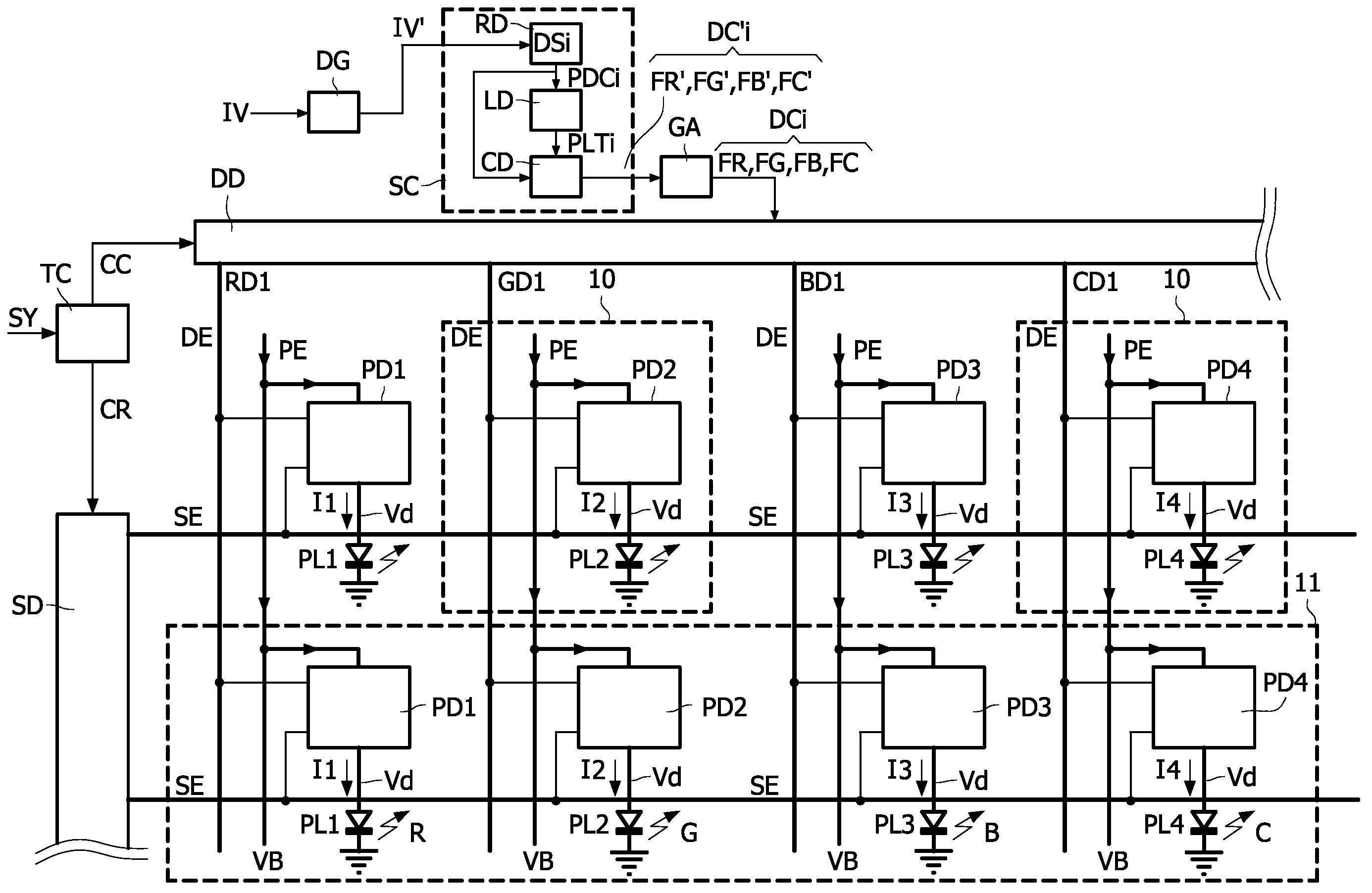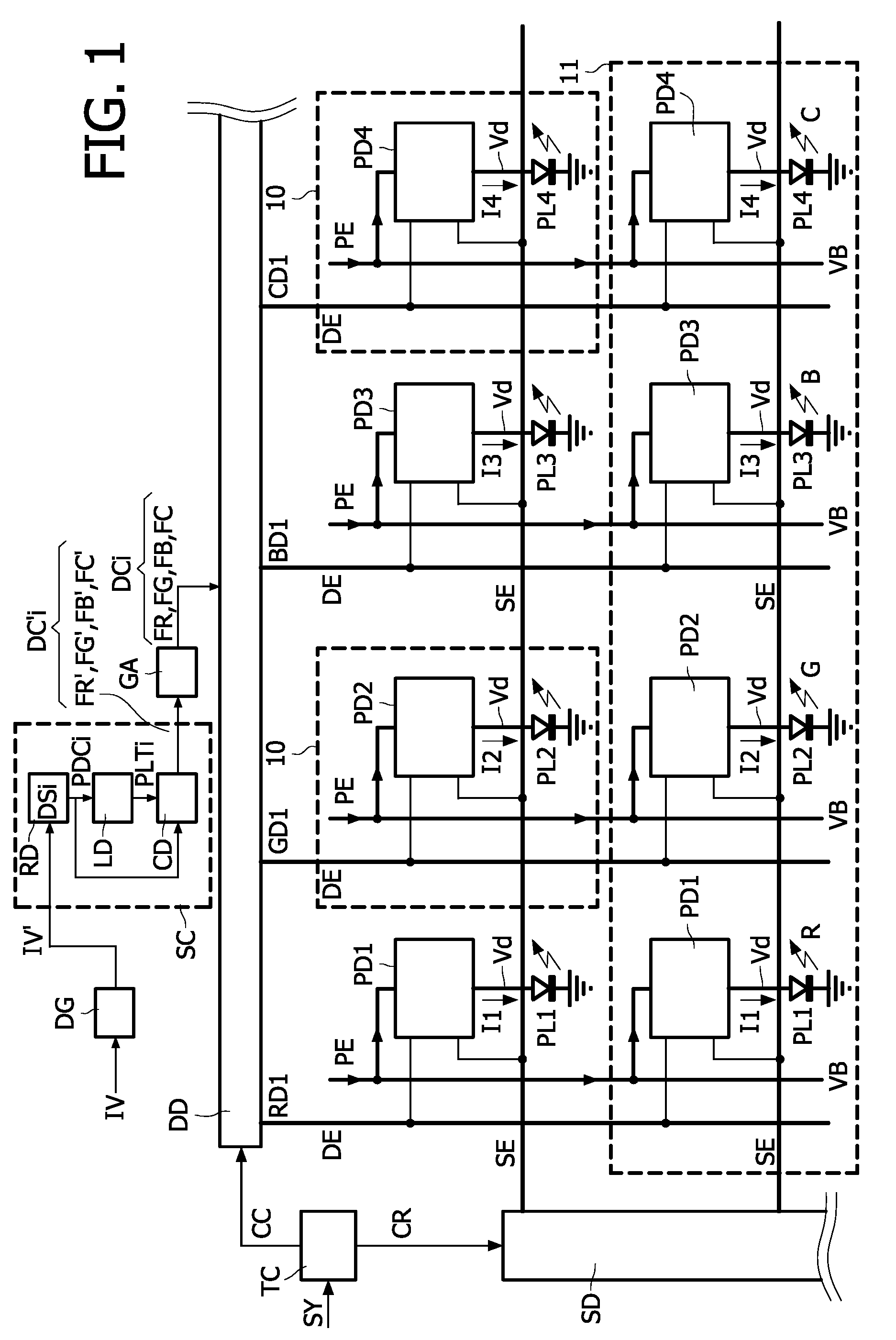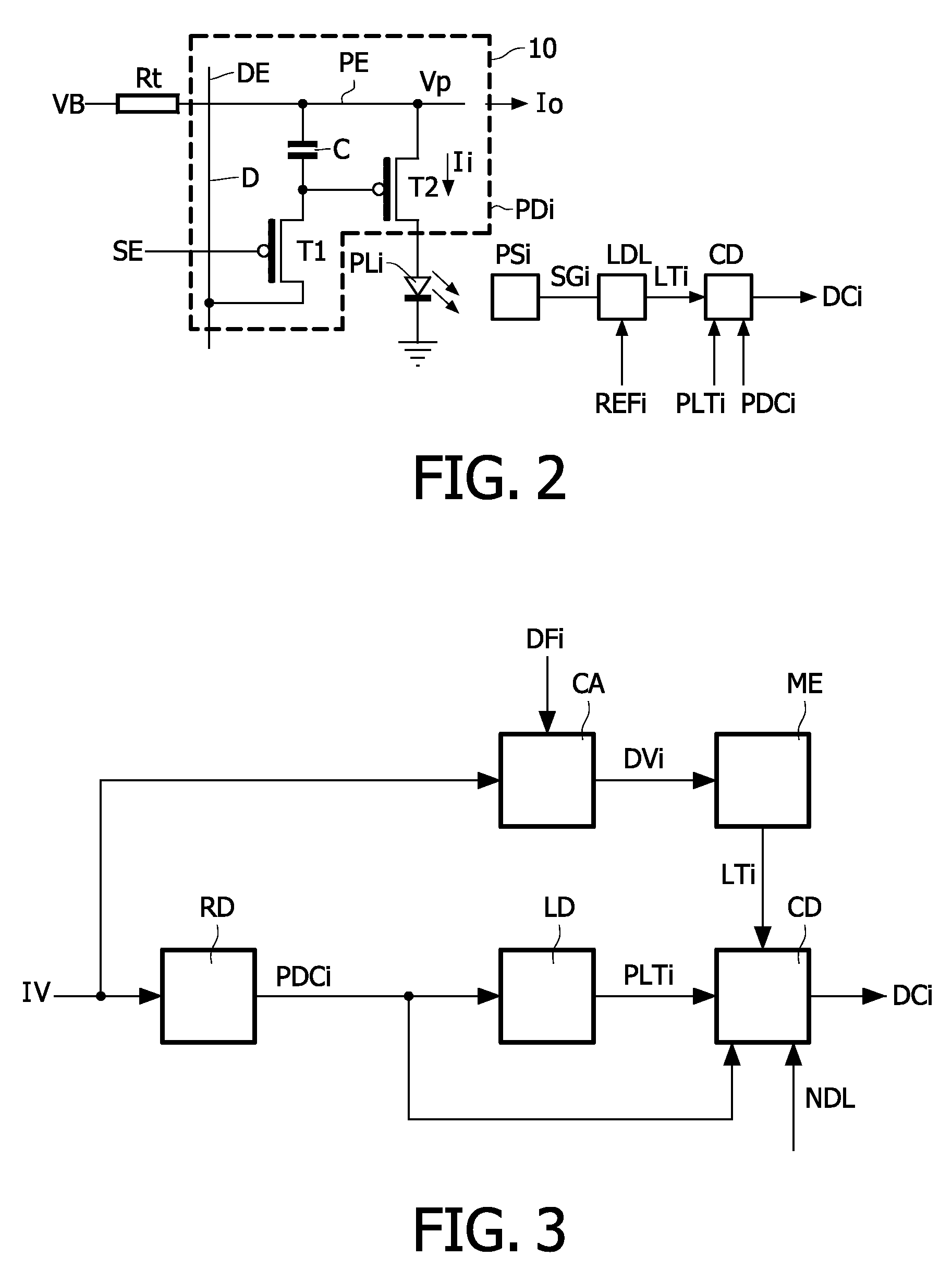Led Display System
a display system and led display technology, applied in the direction of instruments, static indicating devices, electroluminescent light sources, etc., can solve the problem of only being able to limit the maximum current density
- Summary
- Abstract
- Description
- Claims
- Application Information
AI Technical Summary
Benefits of technology
Problems solved by technology
Method used
Image
Examples
Embodiment Construction
[0030]In the now following, references which have capital letters followed by a index indicate a particular item if the index is a particular number, or indicate the item in general if the index is the small letter i. For example, the reference PL1 refers to the LED indicated by this reference in at least one of the Figures. The reference PLi indicates the LED's in general or any sub-group of LED's which are indicated in the Figures only by particular numbers instead of the i. Which items are referred to is clear from the context.
[0031]FIG. 1 shows schematically a display system in accordance with an embodiment of the invention with a display panel which comprises LED's. FIG. 1 shows only eight sub-pixels 10 of a matrix display panel 1. Groups of four sub-pixels 10 form a pixel 11. In a practical implementation, the matrix display panel 1 may have many more pixels 11. It is also possible that the pixels 11 are not arranged in a matrix configuration. The sub-pixels 10 need not be arr...
PUM
 Login to View More
Login to View More Abstract
Description
Claims
Application Information
 Login to View More
Login to View More - R&D
- Intellectual Property
- Life Sciences
- Materials
- Tech Scout
- Unparalleled Data Quality
- Higher Quality Content
- 60% Fewer Hallucinations
Browse by: Latest US Patents, China's latest patents, Technical Efficacy Thesaurus, Application Domain, Technology Topic, Popular Technical Reports.
© 2025 PatSnap. All rights reserved.Legal|Privacy policy|Modern Slavery Act Transparency Statement|Sitemap|About US| Contact US: help@patsnap.com



